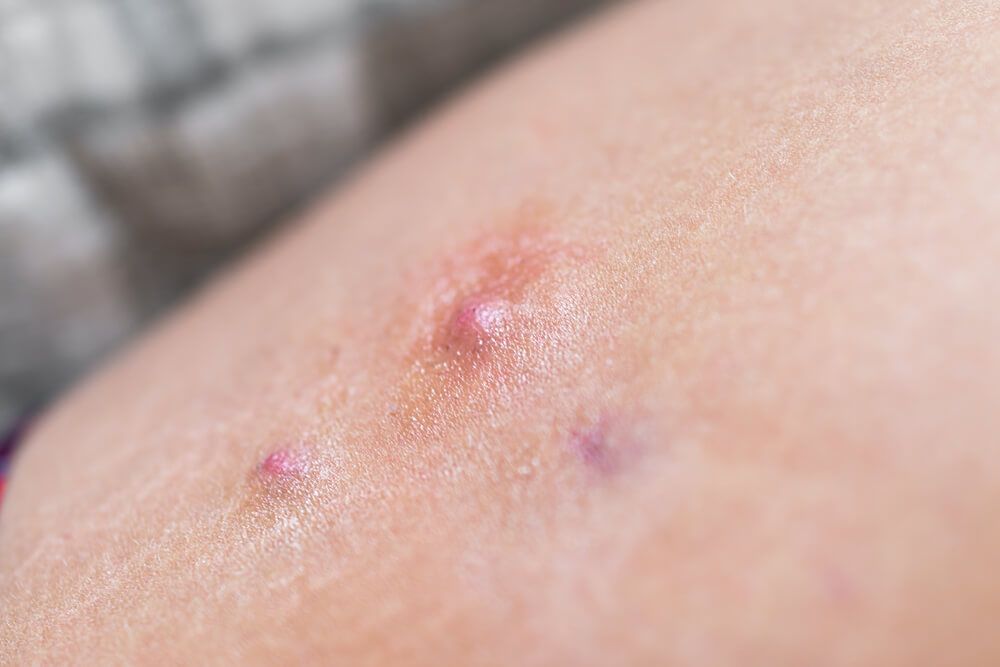What is hidradenitis suppurativa?
Hidradenitis suppurativa (HS) is a skin condition that causes painful lumps deep in your skin. These lumps usually develop on parts of the body where skin touches skin like the armpits, inner thighs, and groin area. Dermatologists are the doctors who specialize in the diagnosis and treatment of this condition.
Is HS contagious?
No
Many people have never heard of hidradenitis suppurativa
During their first appointment with a dermatologist, patients with hidradenitis suppurativa (HS) often say they have pimples, sores, or lumps on their armpits or groin.

Many people live with HS for years before getting diagnosed
Also called acne inversa, HS can look like pimples and acne cysts. It’s not acne, though. Still, when HS first appears, some people think that they have pimples in their armpit, on their inner thighs, or in their groin area.
Without treatment for HS, this skin condition can worsen. Abscesses, which are pockets of pus, can develop. When an abscess breaks open, blood and pus leak out. As the abscess heals, a scar usually develops.
You may develop more abscesses in the same area. If the abscesses and scars continue to appear, tunnels can form under the skin. These pus-filled tunnels are called sinus tracts.
Getting medical treatment from a dermatologist before HS worsens can reduce flare-ups and prevent HS from becoming a painful disease that might cause disability.
Because you may not have heard of HS and HS can look like acne, boils, and sores, it can be difficult to know what to do. In fact, when seeing a dermatologist for the first time, many patients describe the reason for their visit as having one or more of the following:
- Armpit pimples or sores
- A lump or cyst in their underarm
- Pimples, cysts, lumps, or boils on their thigh
- Cysts on their groin
If you have any of these signs and have not seen a dermatologist, make an appointment. Dermatologists specialize in diagnosing and treating the skin and can tell you whether you have HS.
Many people live years with HS before being diagnosed. Years of having HS in the groin can cause trouble sitting or walking. Untreated HS in the armpits can make it difficult to reach for things. This happens when scars develop, which can limit how far you can stretch or bend.
People who go undiagnosed for years may live with intense pain. They can develop wounds that are slow to heal or fail to heal.
To get relief from the pain and care for their wounds, they often go to the emergency room (ER). According to a study conducted in Canada, some people return to the ER 10 or more times before getting diagnosed with HS. That’s why it’s important to see a board-certified dermatologist.
Hidradenitis suppurativa is:
- NOT a sexually transmitted disease
- NOT caused by unclean skin
- NOT contagious
- NOT acne

Is HS more common in Black people?
If you live in the United States and are an African American or biracial woman between 30 and 39 years of age, you have a higher risk of developing HS than do other Americans.
Research shows Black people develop this disease more often than people of other races. In a 2017 study, researchers found that for every 100,000 African Americans, 296 had HS.
Other studies have found that HS is more common in women than men. Research shows that at least three times as many women as men develop HS.
Can HS kill you?
HS can be painful. Without treatment, it can cause scars that make it difficult to move. However, HS is rarely life threatening. The only time HS might become life threatening is when someone develops a serious infection. Treatment and self-care for HS can help prevent a life-threatening infection.
Dermatologists are trained to recognize HS
To a dermatologist’s trained eye, there are differences between HS and other conditions like acne and boils. Dermatologists receive the training needed to spot these differences.
With an accurate diagnosis and proper treatment for HS, you can:
- Prevent HS from worsening
- Relieve pain
- Improve wound healing
- Treat an infection, which can develop if you have an open wound
Research has led to many treatment advances in recent years
Breakthroughs in HS research have led to a better understanding of this disease and better treatment for HS.
Today, many patients receive a treatment plan customized to their needs. A treatment plan may include:
- A skin care plan
- Medication
- A procedure that can be performed in your dermatologist’s office, such as draining or removing a painful lump
- Treatment for infection
- Wound care
- Pain control
- Self-care tips
Is there a cure for HS?
HS cannot be cured, but treatment can control the disease. Treatment can prevent new HS and treat existing HS. This means that HS does not have to stop you from living the life you want to live.
Why see a dermatologist?
Dermatologists are the doctors who usually diagnose and treat HS. When you see a dermatologist for HS, your dermatologist will create a treatment plan tailored to your needs and watch your health closely. People with HS have a higher risk for developing some health conditions, including arthritis, diabetes, and heart disease.
For this reason, dermatologists often work closely with other doctors. Doing so helps you get the care you need.
Your dermatologist can also watch for signs of skin cancer on your skin. Some people with HS have a higher risk of developing a common type of skin cancer called squamous cell carcinoma (SCC).
In people who have HS, this skin cancer tends to develop in unexpected places like around the anus or elsewhere in the groin area.
Dermatologists are skin cancer specialists, so they can spot signs of skin cancer early. Caught early, SCC is highly treatable.
If you’re in Trumbull County, including Howland, Champion, and Warren, OH, trust the expertise of Dr. Morgan Hott, Dr. Hamrock, Victoria Dennis, FNP-C, Wendy Demetrios, FNP-C and Brianna Marin, MPAS, PA-C at Warren Dermatology & Mohs Surgery. Schedule your consultation today at (330) 856-6365. Let’s journey towards healthier skin together.



